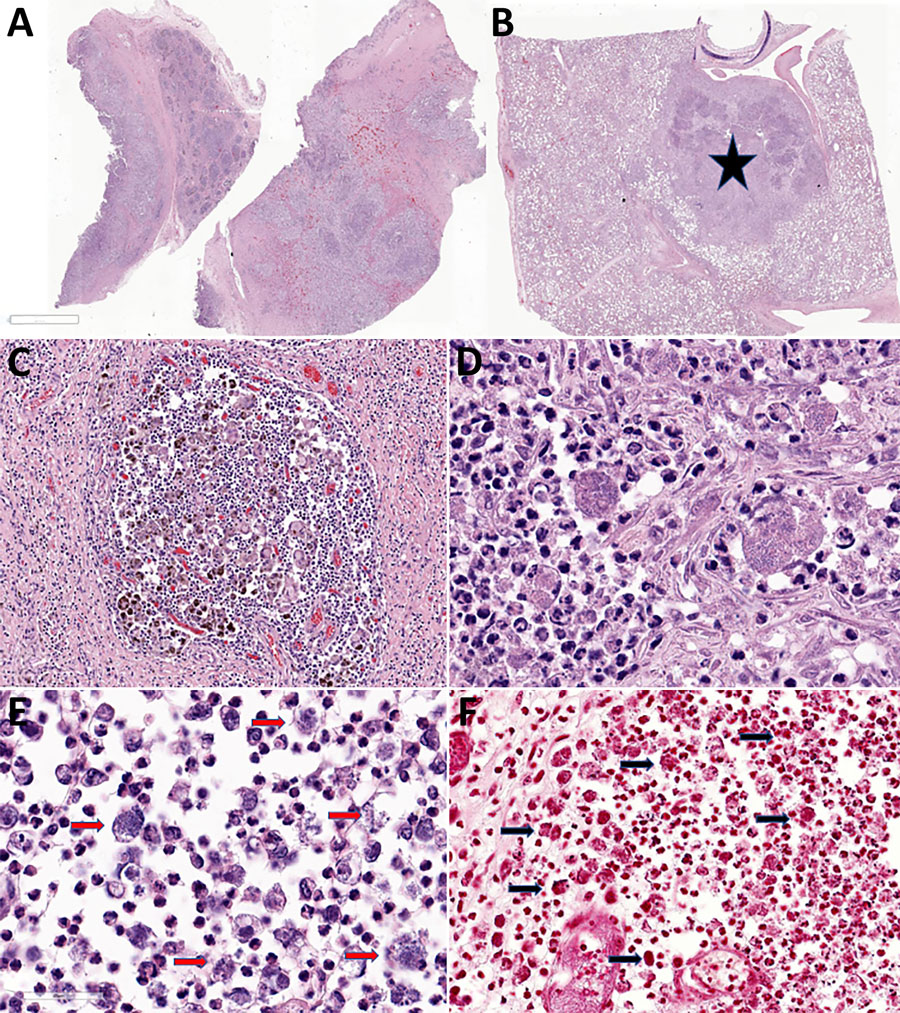Volume 31, Number 7—July 2025
Dispatch
Multisystemic Disease and Septicemia Caused by Presumptive Burkholderia pseudomallei in American Quarter Horse, Florida, USA
Figure 2

Figure 2. Photomicrography of tissues from study of multisystemic disease and septicemia caused by presumptive Burkholderia pseudomallei in American quarter horse, Florida, USA. Photomicrographs show hematoxylin and eosin staining of submandibular lymph node (LN) (A, C, E) and lung (B, D) and Gram stain of the submandibular LN (F). A) Submandibular LN shows multifocal to coalescing pyogranulomas. Original magnification ×2. B) The lung contains a parabronchial abscess (star). Original magnification ×2. C) The submandibular LN pyogranuloma contains necrotic debris, suppurative inflammation, and numerous hemosiderin laden macrophages, multinucleated giant cells surrounded by fibrosis. Original magnification ×20. D) Macrophages and neutrophils in the pulmonary abscess contain a mixed population of 1–2 μm coccobacilli. Original magnification ×40. E) The submandibular node neutrophils and macrophages contain numerous intracellular 1–2 μm bacilli (red arrows). Original magnification ×40. F) The bacilli in the submandibular lymph node are diffusely gram-negative (black arrows). Original magnification ×30.